The battery life of the Otiom-tag
The Otiom tag saves the energy when at home. ‘Home’ is where the tag can communicate with the Otiom home base.
The home base is included when you purchase an Otiom starter kit. It has a range up to 140 m2., measures only 5 x1,5 cm and is neutral in design and is wireless.
The Otiom battery usage increases when the Otiom chip is outside the home base coverage for a long time.
The Otiom-tag must be charged at least once a month!
